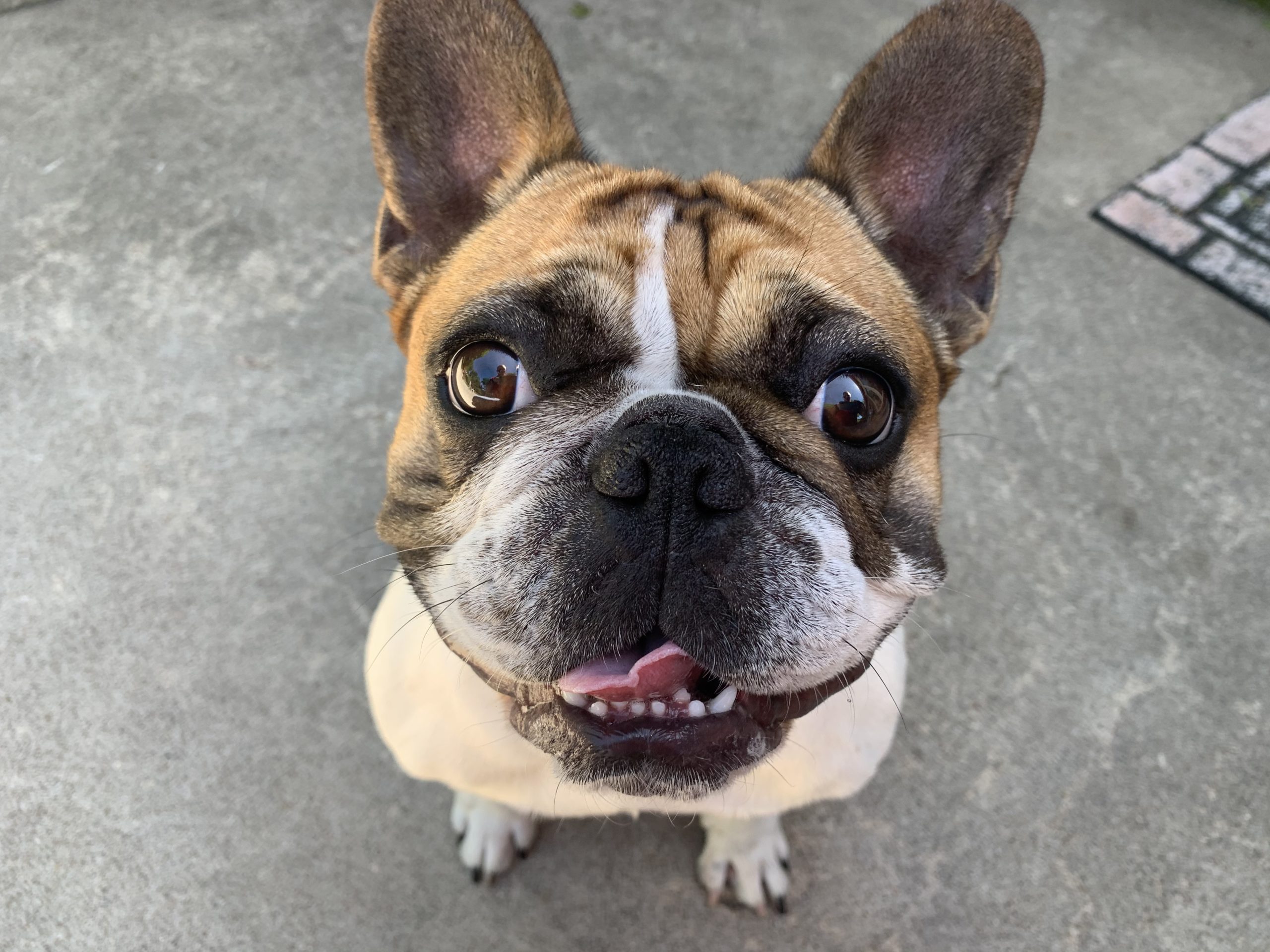Tips to Help a Jealous French Bulldog get on With Other Dogs
By: David Codr
Published Date: June 18, 2020
For this Omaha dog training session we share tips to stop 1 year-old French Bulldog Penelope from acting aggressive to other dogs who have items she wants.
Penelope is as fun to hang out with as it looks like in her photo. She was happy, playful and had some nice wiggly energy when we met for this session.
While she was nice and playful with me, her guardians wanted me to help them with her habit of becoming aggressive to other dogs who had toys. Part of this is simple dog jealousy, part of it is stil being a puppy.
There are many ways to stop a dog from acting aggressive to other dogs. The firts part is to idenify why the dog is acting out. Penelope’s aggressive dog behavior was limited to submissive dogs or dogs who had a high value item in her presence.
We covered a number of dog behavior tips that will help with her energy and percption of leadership in the home. Until a dog sees and respects you as a leader, listening to you and your corrections is optional. My goal was tp show the humans how to create a healthy leader follower dynamic first.
Once we finished with the foundation of good leader follower dynamic, we headed inside and arranged for a relative to bring a puppy over so I could share tips on how to help a jealous dog stop acting aggressive to other dogs. You can learn how to teach a dog to stop acting aggressive to other dogs or pups in the free positive dog training video below.
Exercising Penelope before practicing this tip to stopping dog aggression will really set her up for success. Adding leashes or a LTCA will help ensure things stay safe which will have a positive effect on the humans. This is one of those tricks of the trade we use, but you dont have to be a professinal French Bulldog dog trainer to use this approch.
One thing I forgot to mention in the above video is to drill a hole through the end of a bully stick and use a zip-tie to attach it to the far side of the LTCA. This will help by creating distance between the dogs when Penelope has a high value item. Any time a dog is reactive, adding in distance is a good place to start.
Id like the guardians to practice this trick to stopping jealous dog aggression at least once a week (practicing more often will accelerate the process) by arranging a play date with a relative dog. We want to build up as many interactions between the dogs that doesnt end up in a fight as we can. This way the dog gets to practice hanging out without conflict. So shorter visits or taking a break in the middle of the visit are one of the keys to success.
Id also like to see the guardians monitoring play between Penelope and any visiting dogs. This will allow them to consistently interrupt and give them a time out any time the energy gets past level 5. This is good practice at setting down and also helps the dogs understand what the limits are. Being a young dog, Penelope is still figuring that out so the humans need to be there to provide guarance and assist with breaks until the dogs figure out their limits.
To help the humans remember all the positive dog training tips we shared in this in home Omaha dog training session, we recorded a roadmap to success video that you can watch below.
Categorized in: Dog Behavior


